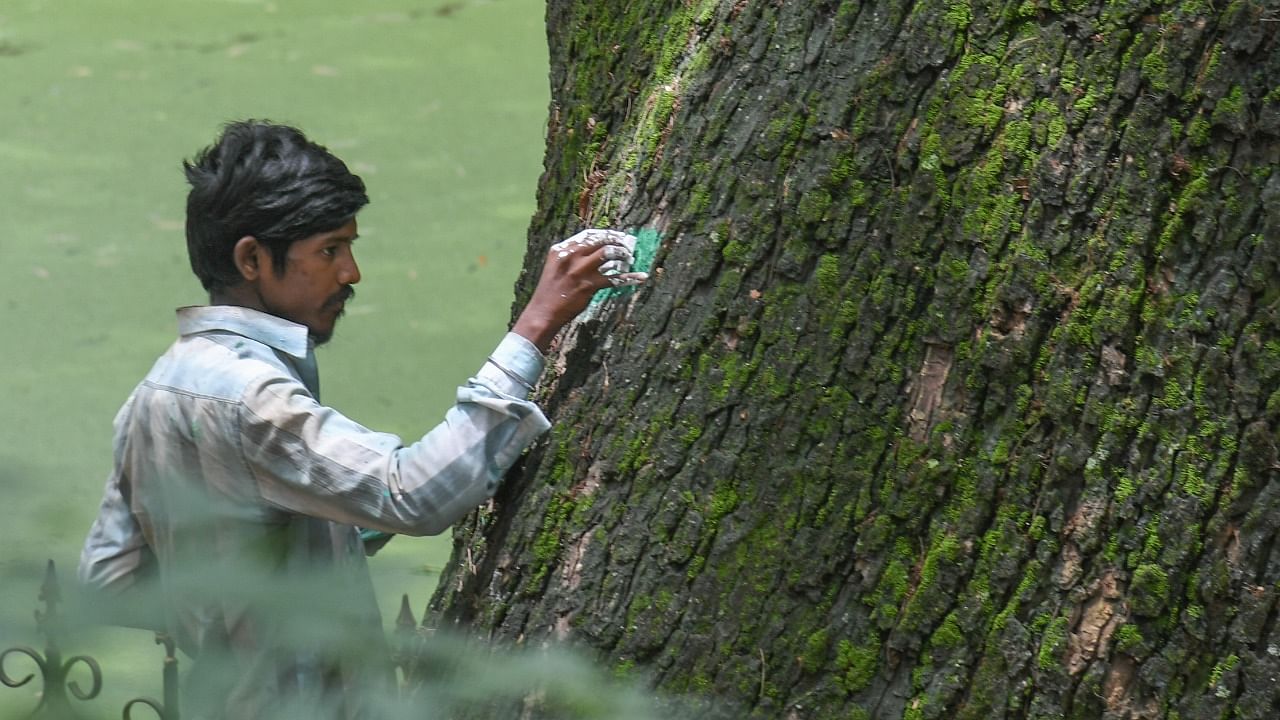
How many trees are there in Bengaluru? After noticing that even the forest officers didn’t know the answer, the High Court, in August 2019, directed the BBMP and the forest department to conduct a tree census as per the provisions of the Karnataka Preservation of Trees Act, 1976.
Come August, it will be three years since the court ordered the officials to count the trees expeditiously.
However, people are nowhere close to knowing the truth about the city’s green cover, which is disappearing fast.
The court’s direction came while hearing a petition filed by Dattatraya T Devare.
It recognised the need for a reference point to ensure that the expansion of the city doesn’t happen at the cost of its greenery.
The BBMP, which has jurisdiction over trees on the roadside and the parks it maintains, has been able to count less than 18,144.
The forest department has counted about 1 lakh trees on public and private land.
“Till date, we have not been able to count more than 10% of the trees. Even before Covid, the initial contract given to Institute of Wood Science and Technology didn’t take off. The pandemic affected the work for two years,” a senior official said.
The official said the BBMP was “back to square one” and was looking forward to signing a memorandum of understanding with Gandhi Krishi Vigyan Kendra (GKVK) for the exercise.
“We estimate that the project may cost about Rs 4.5 crore. Even if it is delayed, the project will now fit better when it comes to mapping trees ward-wise as the delimitation has been completed,” the official said.
A senior official in the forest department acknowledged the reasoning in the high court’s order.
“Without knowing what we have, how can we protect it? A tree census has to be conducted. But it’s a humongous exercise, which requires people with technical skills to measure the girth of a tree and geo tag it. A real census requires a lot of skilled personnel and money,” he said.
Whose greenery is it anyway?
The BBMP website now has nine volumes of the tree census reports by the forest department’s Bangalore urban division, which hardly provide any data on the GPS location of the trees, though the same was directed by the HC. Similarly, the Palike’s four reports do not have location details of trees.
Reports by both the authorities do not help the common man know any details of trees as the format of the data is not only inaccessible, but confusing, considering the lack of any details about the area, ward and road on most of the pages. Since technology allows one to hyperlink GPS coordinates to specific trees, every entry in the reports reduces the tree to just a number.
Erroneous coordinates
DH tested three GPS coordinates, of which two turned out to be erroneous.
“We have raised the issue of glaring errors in the reports in the court. The Tree Act is quite clear on the matter. The census is not just about recording the number of trees, but all relevant data for a particular tree,” the official said.
“Providing coordinates of a large area will be of no use in creating a scientific report. It should have information like age of the tree, the date of survey, canopy, scientific name, economic value, flowering season, whether it is rare species and the presence of any sapling in the area,” he added.
The official said reports must provide the name of the road or other specific location information.
“We also requested the court to direct the survey to be taken up in places where the tree felling requests have been received. A proper tree census will be the foundation of the environmental impact assessment,” he said.